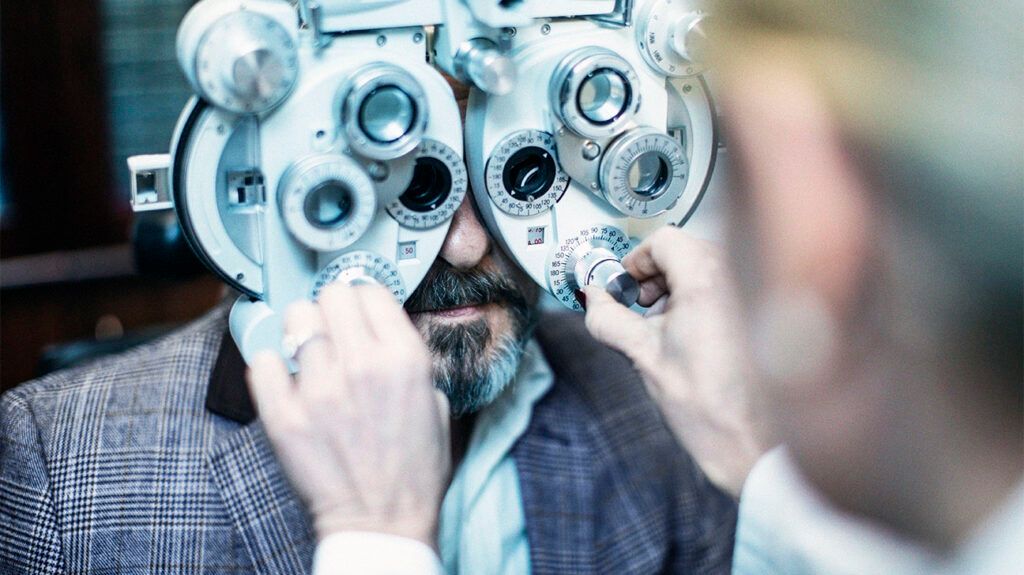Inflammatory Glaucoma: Causes, Symptoms, And Treatment

Inflammatory glaucoma, also known as uveitic glaucoma, is a complication of uveitis. It occurs when inflammation in the eye increases intraocular pressure and damages the optic nerve.
Inflammatory glaucoma develops in 10% to 20% of people with uveitis, which is a rare condition that causes inflammation in the middle part of the eye, or uvea. It can cause symptoms such as blurry vision, eye pain, and eye irritation.
Glaucoma is one of the leading causes of blindness worldwide.
This article discusses the symptoms, causes, treatment, and prevention of inflammatory glaucoma.
Inflammatory glaucoma is a secondary glaucoma, meaning it occurs due to another condition.
Uveitis refers to inflammation in the middle part of the eye or uvea. This inflammation causes elevated pressure in the eye, or intraocular pressure (IOP), which is one of the main risk factors for developing glaucoma.
In uveitis, debris can obstruct the eye’s drainage channel, preventing fluid from draining properly and increasing inflammation. Over time, inflammation can cause scar tissue to develop, obstructing fluid outflow and increasing IOP even more. Glaucoma occurs when excess fluid in the eye puts pressure on the optic nerve and damages it.
Inflammatory glaucoma may also develop due to using steroid treatment to control inflammation in the eye. Steroids may cause up to 42% of inflammatory glaucoma cases.
Read about the causes of uveitis.
Early symptoms of inflammatory glaucoma are similar to uveitis. They include:
These symptoms can affect one or both eyes and worsen over time. Glaucoma typically develops slowly, while inflammatory glaucoma may develop more rapidly. A person may first begin to notice changes at the edges of their vision, or peripheral vision.
If a person experiences these symptoms, it is important to speak with a doctor as soon as possible for diagnosis and treatment.
Occasionally, glaucoma develops suddenly and may cause the following symptoms:
- intense eye pain
- nausea and vomiting
- headache
- red eyes
- tenderness around the eyes
- seeing halos of light around objects
- blurred vision
Anyone experiencing a sudden onset of these symptoms must visit their nearest emergency department, as they may require immediate treatment.
A person with the early stages of glaucoma may not notice vision loss. However, as the condition progresses, they may experience:
- Blurred vision: Glaucoma can cause gradual blurriness in central vision.
- Loss of peripheral vision: Vision on the edges of a person’s field of vision gradually disappears.
- Tunnel vision: As peripheral vision reduces, people may feel like they are looking through a straw or pinhole.
- Blind spots: Glaucoma may cause small blind spots in a person’s vision.
- Halos: People with glaucoma may see glowing circler or halos around lights or objects.
Read more about glaucoma and vision.
People with uveitis must have regular eye tests to monitor IOP and optic nerve damage. These may include:
Ophthalmologists, who are eye care specialists, find it challenging to detect signs of glaucoma during periods of inflammation. Therefore, people should ideally attend eye tests when their uveitis symptoms are mild. However, this is not always possible.
If a person’s eye inflammation is severe, ophthalmologists may need to use other techniques to look for signs of glaucoma.
Read more about glaucoma tests.
Managing inflammatory glaucoma involves addressing both the inflammation and the increased IOP. Doctors must first determine the cause of the inflammation, as this can determine the treatment.
Treatments to reduce inflammation may include:
Doctors may recommend laser treatment for treating inflammatory glaucoma, although there are some concerns that this technique may increase inflammation.
Treatment for IOP typically involves medicated eye drops, which may contain the following medications
- beta-blockers
- prostaglandins
- a-adrenergic agonists
- carbonic anhydrase inhibitors
- a combination of medications
Doctors may also prescribe oral medications, such as corticosteroids, to control IOP.
Treating inflammatory glaucoma may require a team of specialists, including specialist eye doctors and a rheumatologist specializing in inflammatory conditions.
Preventing inflammatory glaucoma is difficult because people do not always know the cause of the inflammation.
Lifestyle measures may help reduce the likelihood of inflammatory glaucoma, such as:
- getting regular eye exams to detect issues early
- treating underlying conditions that may contribute to uveitis
- wearing eye protection to prevent injuries
- treating infections so they do not worsen
- eating a nutritious diet
- ensuring adequate vitamin D levels by getting plenty of sunlight
- avoiding or stopping smoking
If people experience any symptoms of uveitis or glaucoma, such as eye pain, blurred vision, and light sensitivity, they need to make an appointment with a doctor.
Symptoms that start suddenly, such as intense eye pain, headache, and seeing circles of light around objects, may require emergency treatment. A person needs to call 911 or visit their nearest emergency department.
Inflammatory glaucoma may be responsible for up to 12% of all vision loss. However, with treatment, many people can maintain good vision. The Glaucoma Research Foundation reports that around 5% of people with a glaucoma diagnosis in developed countries will experience complete vision loss.
When doctors diagnose and treat glaucoma in its early stages, there is a better likelihood of preserving vision.
Read more about glaucoma and blindness.
Inflammatory glaucoma is a complication of uveitis, which is inflammation in the middle part of the eye. It occurs when inflammation causes fluid buildup in the eye, increasing pressure and damaging the optic nerve.
People with inflammatory glaucoma may lose some peripheral vision and have sore, irritated eyes.
Early diagnosis and treatment are crucial, so regular eye tests are important, particularly for older adults. Medicated eye drops are a common first-line treatment, and surgery might help in some cases.
Anyone experiencing vision changes or discomfort around the eyes needs to consult a doctor about their symptoms.



